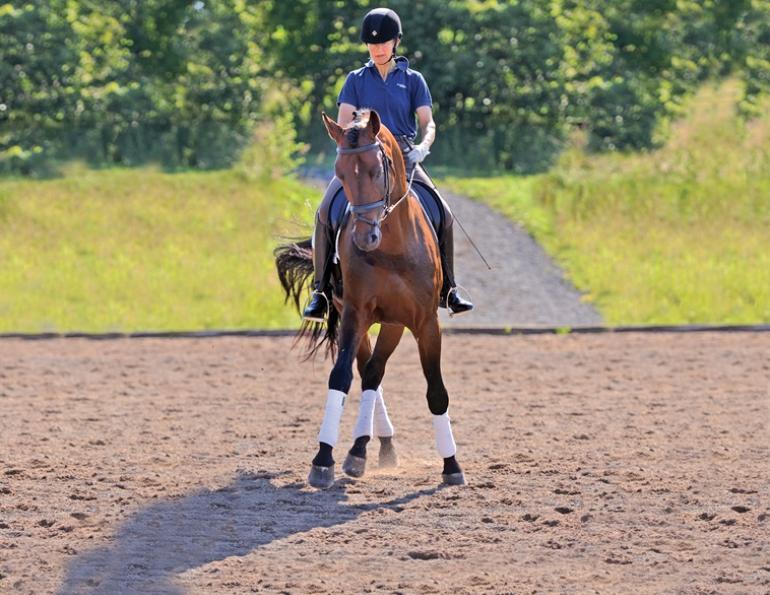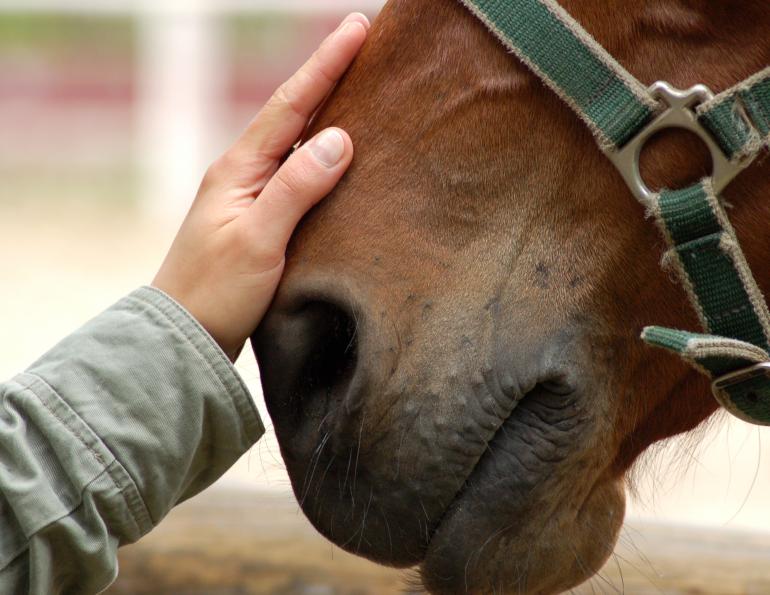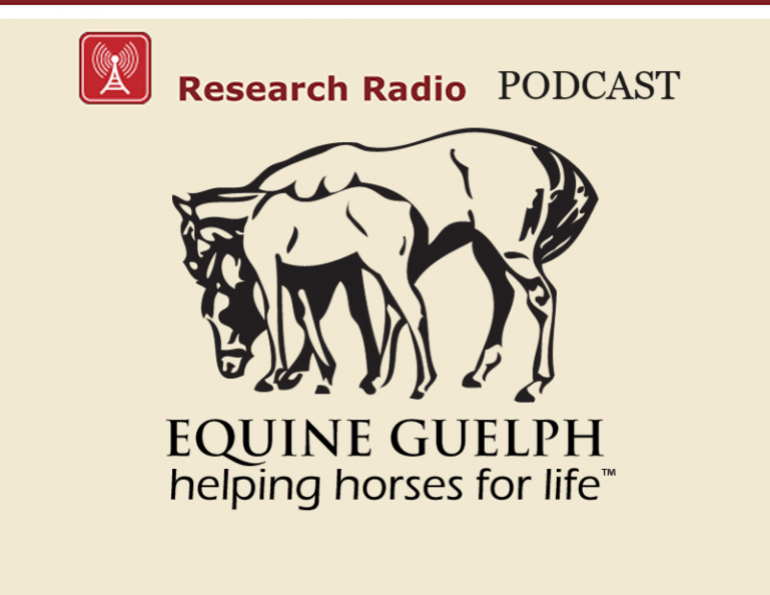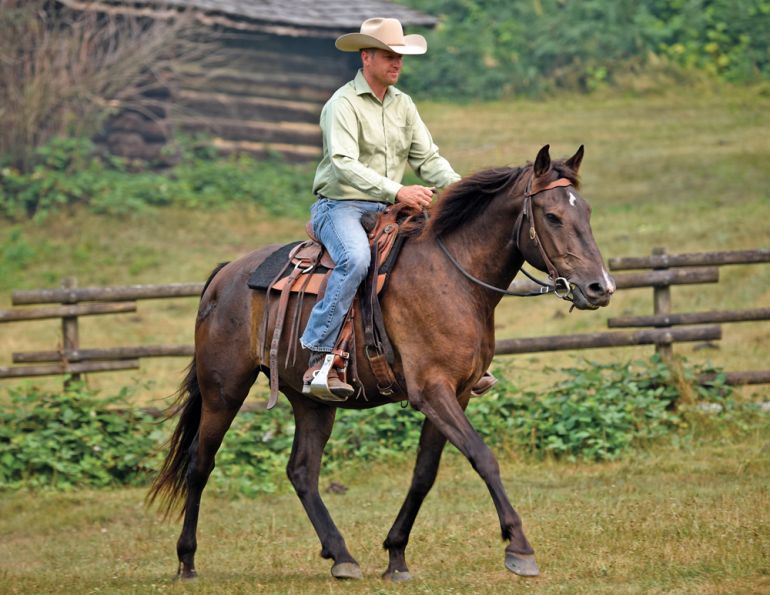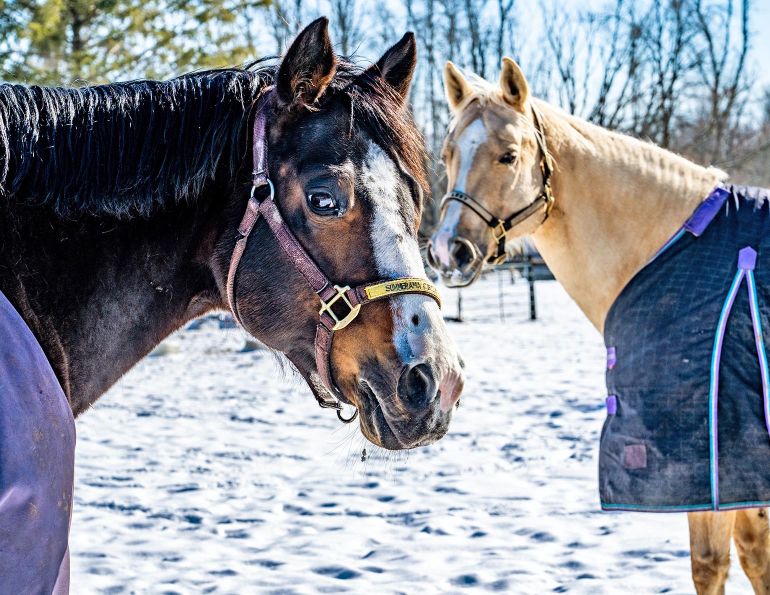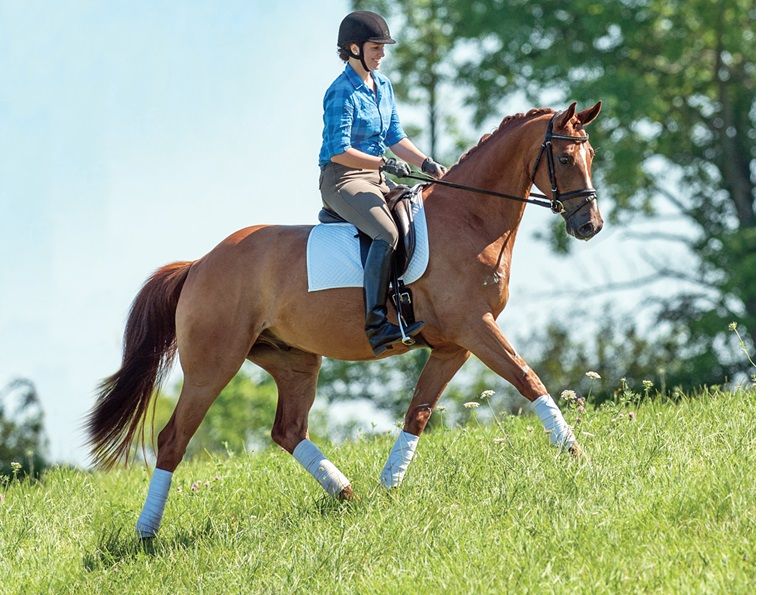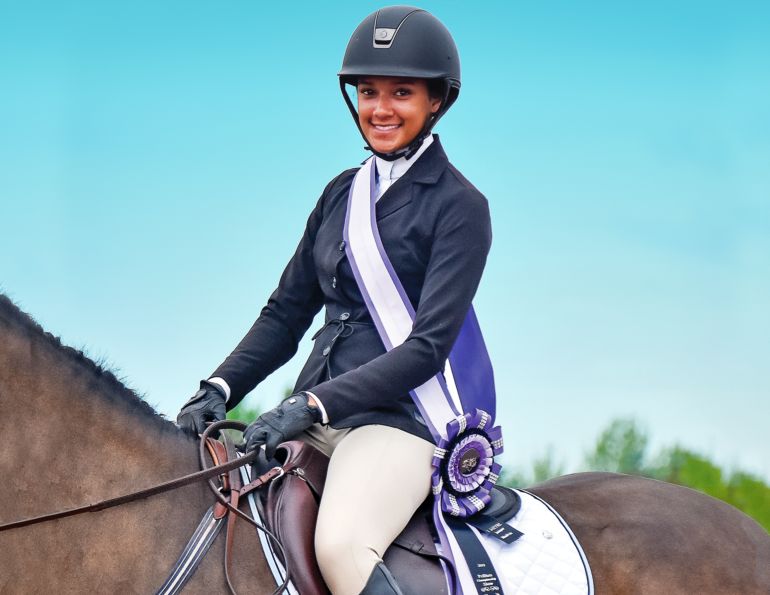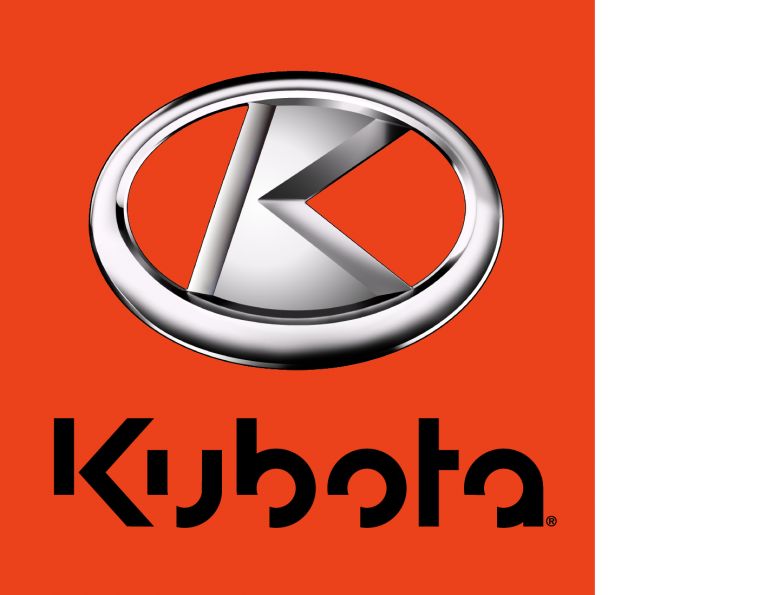Moving Sideways, or Moving Mindfully?
By Jec A. Ballou
While they used to be predominantly the domain of prancing dressage horses, lateral movements like shoulder-in and haunches-in offer unrivaled conditioning effects for almost any equine athlete. Exercise science has shown them to be on par with gymnastic routines like hill repeats and cavalletti routines in terms of muscle recruitment, with a bonus of altering motor sensory patterns. Below I will explain how and why you might consider incorporating them.
Depending how they are performed, these lateral movements offer two main purposes for horses: bodybuilding or physical therapy. When used outside these goals, the exercises fail to have positive physical benefits. In fact, they can act negatively on a horse’s way-of-going. This most often happens when riders start practicing shoulder-in or haunches-in for reasons like boredom, to modify a horse’s behaviour, or confusion about when and why to use them.
When you begin to use these tools in your training, ask yourself what purpose will they serve – bodybuilding or therapy? If bodybuilding, how do we confirm the horse is prepared for the effort of these exercises without straining? If physical therapy, what kind of changes can you expect, and how much should you challenge your horse?

When you can trot a ten-metre circle with steady rhythm and inside bend through the horse’s spine, and he stays consistent in his body posture and round over his topline, your horse is ready for the challenges of lateral exercises. Photo: Shutterstock/Rolf Danenberg
Lateral Work as Bodybuilding
For most horses, shoulder-in and haunches-in, and later half-pass, are tools to increase strength in the structures that facilitate traveling with more weight on the hindquarters. During lateral strides, the horse alternately engages and stretches his gluteus medius, while the tensor fascia lata muscle stabilizes forces around the hip. Elastic strength here increases both flexion and extension of the hip and stifle joints.
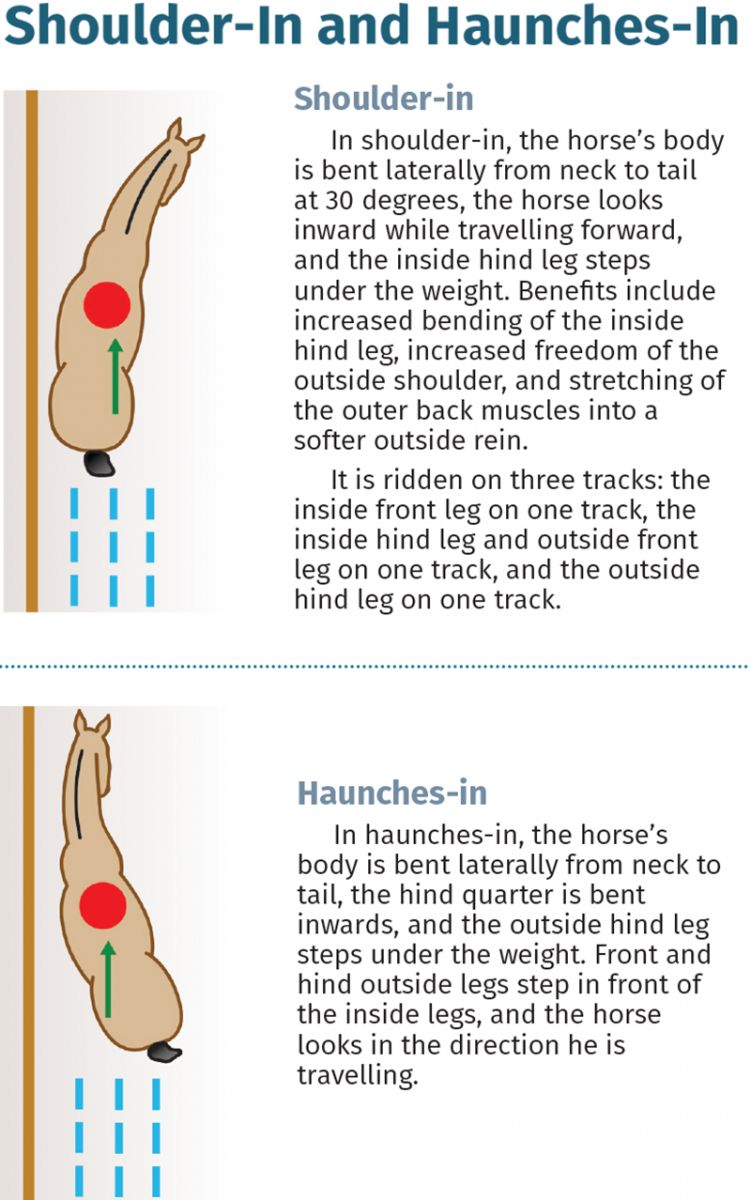
Equally important, the pectorals and inner leg muscles like the groin pull the leg sideways and then stabilize the torso over it. Difficult to access with other exercises, these muscles improve his posture during all other areas of performance by toning the sling muscles that suspend his trunk. When trained consistently, these exercises result in the horse being able to move across the ground looking — and feeling — both super-charged and effortless at the same time.
Admittedly, the horse gains these results only when he performs the maneuvers correctly, which is no small feat. We will cover the specific cues in a future article, but for now the following tips will help you avoid common mistakes and figure out if these tools should be part of your repertoire.
Related: How to Train on the Trail
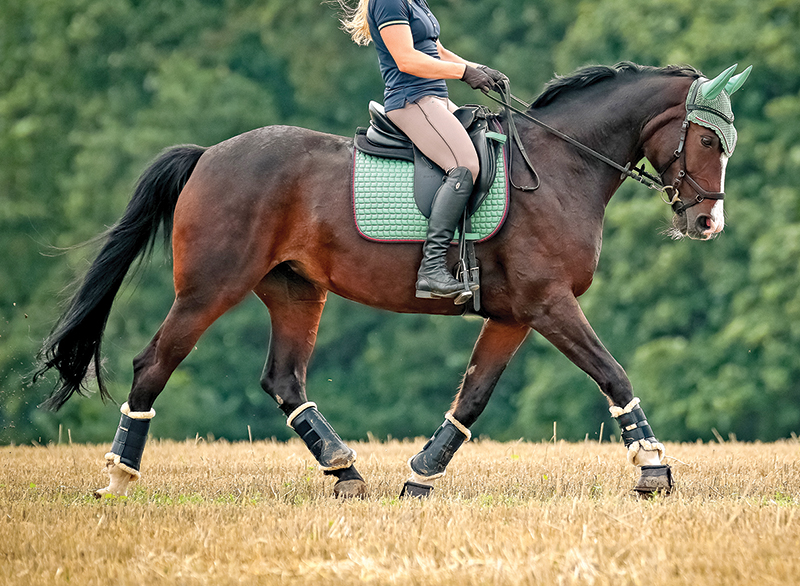
After each round of lateral work, straighten the horse and ride forward in a good working trot to refresh his energy. Photo: Shutterstock/Rolf Danenberg
Test if Your Horse is Ready
If he has not yet achieved foundational balance, the horse will muddle his way through these exercises using compensating muscle patterns, which will strengthen him in the wrong ways. How do you know if your horse is ready to start challenging with lateral exercises? Use a ten-metre circle test.
When you can ride him at trot around a ten-metre circle with perfect geometry, all the while maintaining an absolutely steady footfall rhythm and an inside bend through his spine, and he stays round over his topline and consistent in his body posture, then you are ready. If there are small hiccups at all in rhythm, bend, or posture you will want to wait before jumping in to lateral work. Be especially patient to start lateral exercises if your horse’s body posture gets unsteady or he gets sluggish on the circle.
Related: How to Format Your Horse's Ride
Keep the Balance
Little is gymnastically gained from the exercises if the horse travels in an incorrect posture. A horse that is prepared for lateral movements needs to be comfortable and secure moving in a markedly uphill balance, meaning his topline remains rounded and he carries his poll, fluidly arched, slightly higher than his withers. Should the horse abandon these qualities when you perform a shoulder-in, do not carry on just for the sake of doing the exercise.
Practice Short
Riders often find it so much fun to ride, and occasionally elusive, that they drill these movements too repetitively. When this happens, the horse begins to brace up his body and get dull, nullifying any potential gains. Resist the temptation to ride around the arena stuck in shoulder-in or haunches-in. Treat them as an interval format: ride ten strides, then straighten the horse out for several seconds, then repeat ten strides of shoulder-in or haunches-in.
Mind the Footfall
Most of us become so fixated on the contortions of the exercises themselves that we stop guiding the horse forward in a clear rhythm. In this case, his footfalls become erratic or they slow down to a sluggish crawl. Lateral work only serves as bodybuilding when the horse approaches it with the right rhythm. Any time you are practicing and you notice the horse’s rhythm falter, immediately leave the exercise you are doing and restore his gaits.
Trotting is your Friend
To build strength in the horse’s gymnastic muscles, lateral movements are best performed at the trot. Riders can choose to sit or post the trot. Some studies have shown, in fact, that the horse is able to reach further laterally with his strides when the rider sits lighter by posting the trot. Each horse differs, however, and the rider should rise or sit based on how the horse is able to best maintain balance and rhythm throughout the exercise.
Lateral Work as Physiotherapy
For horses not in a program of building gymnastic strength but instead needing physical therapy to repair dysfunctional movement or poor body mechanics, lateral exercises can be curative. Used in this capacity, the exercises are best performed at a walk with the horse in a horizontal body posture (relative to the ground) rather than markedly uphill. Using this posture and slower paces takes the workload away from gymnastic muscles and ensures the horse stimulates his postural muscles.
Lateral exercises performed in a relaxed state like this trigger several responses that reflexively lead to improvements in the horse’s way of moving. They can form part of a rehab program, restore mobility, and help resolve asymmetrical or imbalanced muscular development.
Some of the most obvious responses generated are better coordination and proprioception. By recruiting the deep inner structures needed to stabilize the spine and joints during sideways movement, the horse stimulates these richly innervated areas that become dormant when poor posture or movements habituate. In this way, we can think of these tools as “waking up” parts of his nervous system.
Of note, the lumbar multifidi muscles are recruited, allowing the horse to channel movement better through his back. As these muscles tone, the horse’s trunk is able to rotate between the shoulder blades as needed during turns and spinal bending. They also help the horse keep his balance and stability rather than get wobbly in his pelvis during forward movement, gait transitions, and riding uneven terrain.
Below are a few primary tips to consider when using lateral work as preventative care or therapeutic exercise.
Mostly Walk
The helpfulness of these movements owes to their specificity, which means you want to be as precise with each execution as possible. Moreover, you want to target only the postural muscles, which are slow-twitch fibres and respond only to appropriately low intensity contractions. Performing shoulder-in, haunches-in, and half-pass at a walk with occasional surges of easy jog is the best way to deliver physiotherapy benefits. The gait should be rhythmic, but slow and steady.
Practice Unmounted
The nervous system adapts to carrying a load, meaning the type of movement it generates is different with a rider versus without. For this reason, practicing lateral exercises from the ground without weight in the saddle can allow you to influence neural pathways and patterns more directly than from the back. The horse’s motor and sensory circuitry is often more available to change.
Thread it Together
Blending together two exercises in sequence offers an excellent stimulation to his neuro-sensory system that allows you to re-program movement patterns. It also prevents any bracing or dullness that comes from holding him in a particular movement too long, or the negative effects of anticipating a certain number of strides in it. As an example, execute four strides of shoulder-in and then immediately do four strides of haunches-in or half-pass, and then return again to shoulder-in. The postural adjustments required by this kind of footwork improve involvement of the horse’s motor and sensory nerves during movement.
Refresh Forward Energy
Yes, you will be practicing at slower speeds but do bear in mind that nothing is accomplished if the horse crawls along sluggishly. Much of the purpose is to increase range of motion in the joints and to awaken the small muscles around them. If the horse walks or jogs with listless and stiff steps, then this does not happen. As a general rule, think about accelerating a little after each round of lateral work. In other words, perform four to six strides of shoulder-in and then check your energy, giving a little boost as needed.
Corner Prep Exercise
Whether your intention is bodybuilding or physiotherapy, a good starting point will reward your efforts. On that note, I offer the following exercise for teaching shoulder-in and haunches-in to horses and riders. I like it most of all because it emphasizes the accuracy of rhythm while learning the mechanics of each maneuver.
Note: These instructions describe a shoulder-in, but the pattern is easily modified for haunches-in as well.
1. Use four ground poles and a cone or cavalletti block to set up a 90-degree angle as shown (you will be riding behind the cone).
2. In a lively walk, ride your horse through this 90-degree “corner” a half dozen times, staying very close to the poles throughout.
3. As you pass behind the cone, verify these check points:
- Horse is bent with his spine in an arc, or banana shape.
- Rhythm of footfalls does not change at all.
- Horse’s posture remains steady, meaning he does not wiggle or wobble anywhere in his body.
4. When you can confirm the above checkpoints, the next time you ride behind the cone…
5. Close your inside leg against the horse’s ribcage, draw your outer leg rearward about a palm’s width to act as a guardrail, and turn your shoulders (not your pelvis) to rotate about 45-degrees off your line of travel.
6. As you come out of the corner, this body position tells your horse’s shoulders to follow yours and shift over to a separate line of travel from his haunches. Your pelvis remains facing straight ahead to tell his pelvis to keep going that way rather than following his shoulders.
The Corner Prep exercise works because it teaches riders to practice just a few good quality steps of shoulder-in or haunches-in rather than wrangle themselves all the way around the arena getting contorted. It is imperative that the horse does not learn compensatory muscle patterns early on. Fumbling through the movement with all the wrong muscles engaged does not accomplish our goals. Not only are these patterns difficult to rewire later on, but they also cause the horse a fair amount of confusion and anxiety.
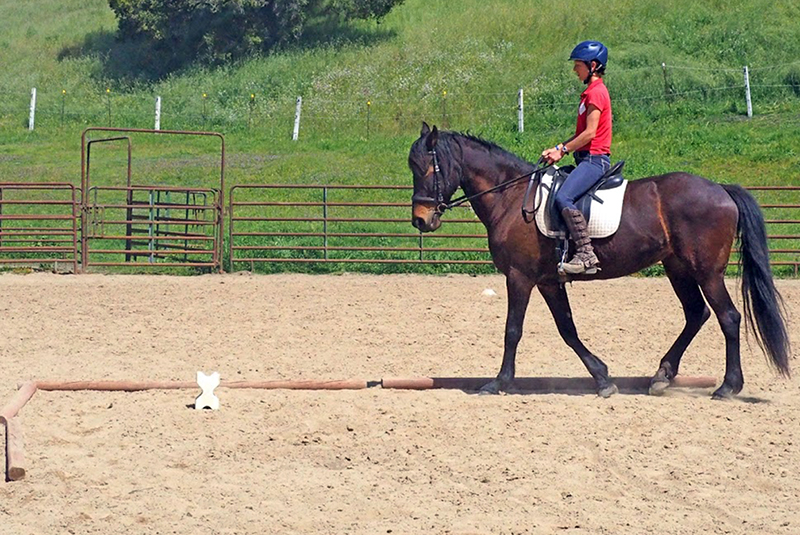
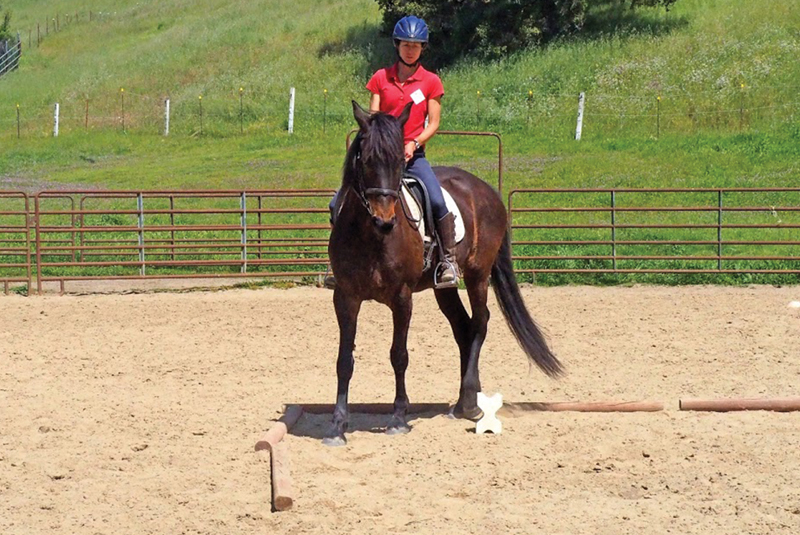
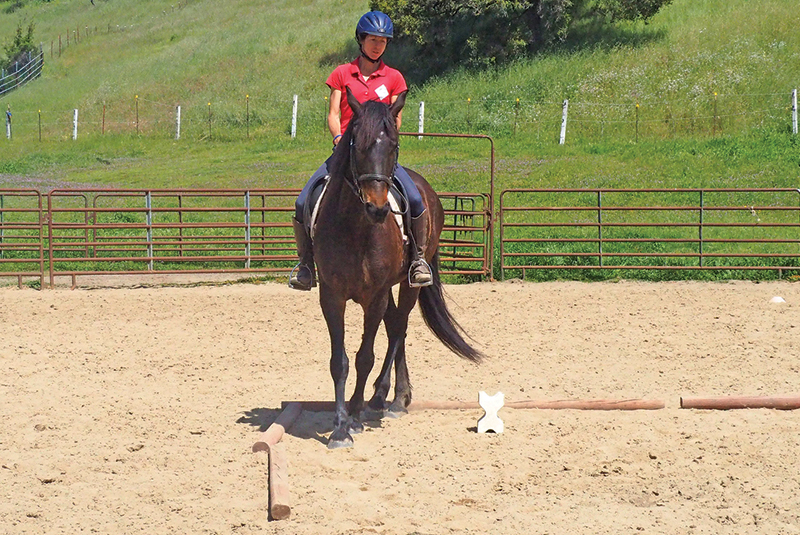
Photos: Jec A. Ballou
Related: How to Engage Your Horse's Hind Legs
Footing is Critical
Avoid practicing lateral work, either unmounted or mounted, on hard ground. During sideways movement, the horse’s hoof rotates from one side to the other and without soft ground to press down into, that rotation causes torque on the fetlock joint and ligaments of the lower leg and hoof.
During any horse’s riding career, lateral exercises can serve different purposes at different times. Sometimes they will serve as therapy to resolve a postural fault that has developed. Other times, they will play an important role enhancing the horse’s gymnastic performance. In this article, I have clarified these two roles and hopefully given you a plan for approaching them.
Main photo: The shoulder-in, haunches-in, and half-pass (shown) increase strength in the muscles that improve the horse’s posture during all other areas of performance. Credit: Clix Photography



